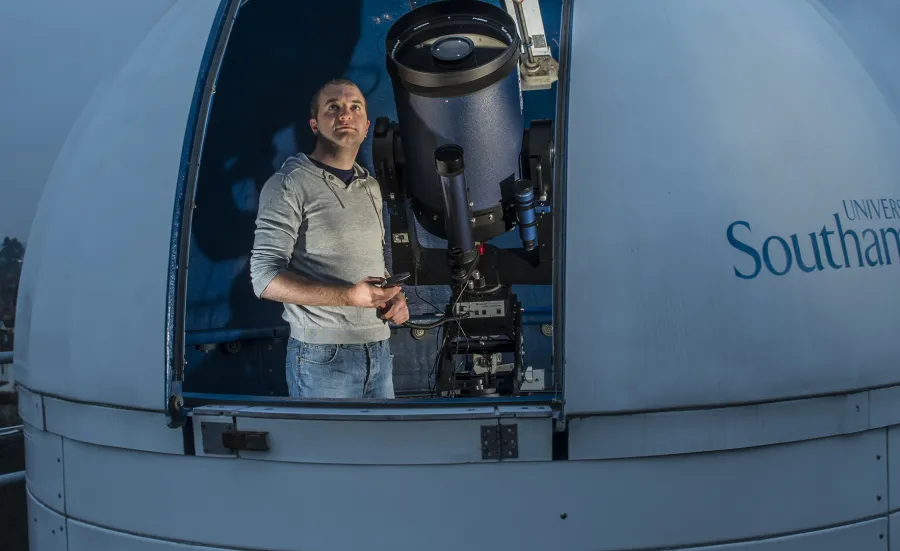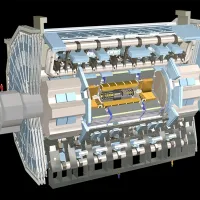Physics and astronomy

Join our rich and vibrant community of researchers. Together we’re understanding the physics behind the fabric of the Universe and how it affects the world we observe.

Join our rich and vibrant community of researchers. Together we’re understanding the physics behind the fabric of the Universe and how it affects the world we observe.

We are ranked in the top 5 physics and astronomy departments in the Russell Group for our research output. Our world-leading status has been confirmed in the Research Excellence Framework (REF) 2021.
You will be supported by a supervisor who'll help you shape your research topic. You'll also join one of our research groups. Being a member of a research group means that interested people are always on hand to hear your ideas, discuss your results and offer help and encouragement.
You'll be able to attend postgraduate lecture courses, classes and research seminars to broaden your knowledge. There will also be opportunities to attend short courses or summer schools, such as Institute of Physics workshops and NATO Advanced Study Institutes. These bring together experts to give lectures and lead discussions.
We'll encourage you to travel for conferences and research collaborations at other large laboratories and world-class observatories, such as CERN and The European Southern Observatory in Chile.
As a newly qualified PhD in Physics, you'll have many career options open to you. Our students head into non-scientific careers, or take up science-based appointments in the UK. Others go one to postdoctoral research, often in the United States, Europe or, increasingly, Japan.
We invite PhD applications to study within the following research areas:
The University of Southampton is pleased to announce that PGR students from EU and Horizon associated countries joining us in 2026-27 will pay the same as UK PGRs for their PhD.
You can either apply for a structured studentship or propose your own PhD idea.
Structured studentships are advertised PhD projects with a title, supervisor, remit and funding already in place. These projects have been set up through collaborations with industry, external partners or they may have been provided through one of several Centres for Doctoral Training which we take part in.
Taking one of our structured studentships will give you access to additional training, conferences and secondments.
We offer a wide range of fully funded studentships. We run several of our PhD studentships in partnership with doctoral training centres, meaning you'll benefit from enhanced training and in some cases funding as well.
These studentships:
Doctoral training centres offer fully funded studentships which include:
Find out more about doctoral training centres.
In association with the UK joining the EU Horizon Programme, the University of Southampton will be introducing and applying an EU fee waiver for students joining us from EU and Horizon associated countries. This means that PGR students joining us from 2025-26 will pay the same fees as UK PGR students.
See here for full information terms and conditions
We offer scholarships and teaching bursaries ourselves. Your potential supervisor can guide you on what is available.
If you’re an international student you may be able to apply for a scholarship from your country.
Find out more about scholarships
Once you've found a supervisor, they can help you with potential funding sources. We offer match funding in some cases.
You'll need to state how you intend to pay for your tuition fees when you submit your application.
Find out more about funding your PhD
You may be able to fund your postgraduate research with funding from your current employer or from industry.
You can borrow up to £30,301 for a PhD starting on or after 1 August 2025. Doctoral loans are not means tested and you can decide how much you want to borrow.
Find out about PhD loans on GOV.UK
You may be able to win funding from one or more charities to help fund your PhD.
We charge tuition fees for every year of study. If you're applying for a fully funded project, your fees will be paid for you.
EU Fee Waiver: If your country is part of the Horizon Europe Programme, you will pay the same fees as UK students.
Find out if your country is part of the Horizon Europe programme
2025 to 2026 entry:
| Subject | UK and Horizon applicants | International fees |
|---|---|---|
| Physics and astronomy full time | £5,006 | £26,700 |
| Physics and astronomy part time | £2,503 | £13,350 |
| Quantum Technology Engineering full time | £5,006 | £26,700 |
| Quantum Technology Engineering part time | £2,503 | £13,350 |
2026 to 2027 entry
| Subject | UK and Horizon applicants | International fees |
|---|---|---|
| Physics and astronomy full time | To be confirmed Spring 2026 | £27,300 |
| Physics and astronomy part time | To be confirmed Spring 2026 | £13,650 |
| Quantum Technology Engineering full time | To be confirmed Spring 2026 | £27,300 |
| Quantum Technology Engineering part time | To be confirmed Spring 2026 | £13,650 |
You're eligible for a 10% alumni discount on a self-funded PhD if you're a current student or graduate from the University of Southampton. This will not apply for programmes that are externally funded. Please check the fees and funding section.
As a postgraduate student you'll join one of our research groups. We're ranked in the top five departments for our research output among the Russell Group universities.


We offer 2 doctoral routes:
It's a good idea to email potential supervisors to discuss the specifics of your project. It's best to do this well ahead of the application deadline.
You’ll find supervisors’ contact details listed with the advertised project, or you can search for supervisors in the staff directory.
You’ll need to send us
The application process is the same whether you're applying for a funded project, or have created a research proposal.
You need at least a 2:1 degree in a relevant subject, for example a Master of Science in physics or a Master of Physics, or its international equivalent.
If English is not your first language, you'll need an IELTS minimum level of 6.0 with a 5.5 in writing, reading, speaking and listening.
Your awarded certificate needs to be dated within the last 2 years.
If you need further English language tuition before starting your degree, you can apply for one of our pre-sessional English language courses.
Check the specific entry requirements listed on the project you’re interested in before you apply.
For general admissions questions, please contact the Doctoral College - feps-pgr-apply@soton.ac.uk.
Research degrees have a minimum and maximum duration, known as the candidature. Your candidature ends when you submit your thesis.
Most candidatures are longer than the minimum period.
| Degree type | Duration |
|---|---|
| Physics and astronomy PhD full time | 2 to 4 years |
| Physics and astronomy PhD part time | 3 to 7 years |
| Quantum Technology Engineering Centre for Doctoral Training PhD (full time) | 4 years |
| Quantum Technology Engineering Centre for Doctoral Training PhD (part time) | 7 years |